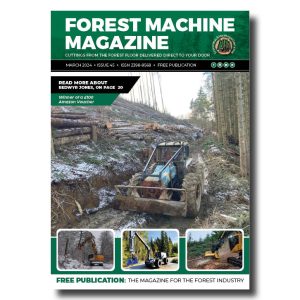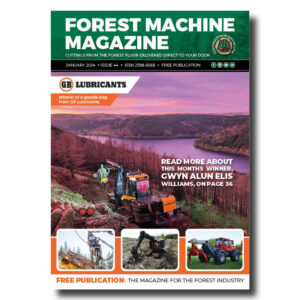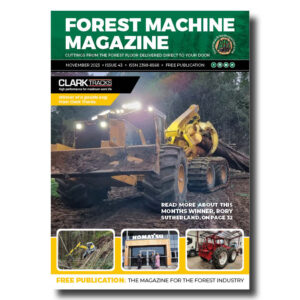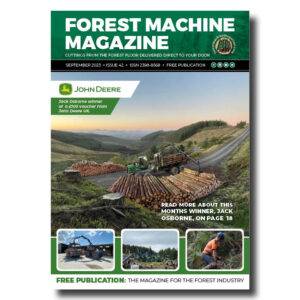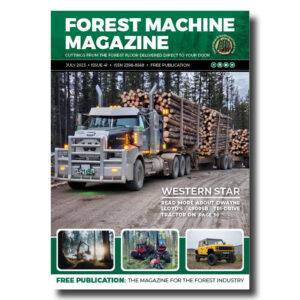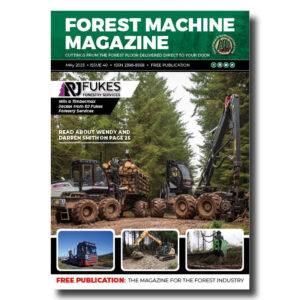Amendments to EUDR could harm EU efforts to block Russian conflict timber
Russian Conflict Timber-A January 2025 Earthsight report showed that the EU had imported over €1.5 billion of illegal Russian and Belarusian birch plywood via third countries since sanctions on these products took effect. Their new research shows that the EU has imported a further €273 million of ‘blood-stained birch’ between November 2024 and April 2025, laundered through China, Kazakhstan, Turkey and Georgia.

-
That’s a remarkable amount of work hours for a single machine, the Norcar 600 owned by Erkki Rinne is taken well care of, it even has the original Diesel engine.
-
Kieran Anders is a forestry contractor working in the lake district. His work involves hand cutting and extracting timber using a skidder and tractor-trailer forwarder.
-
It is not possible to eliminate chain shot, but there are simple steps that can be taken to reduce the risk.
-
Arwel takes great pride in the fact that the mill has no waste whatsoever, “the peelings are used for children’s playgrounds, gardens and for farm animals in barns in the winter and the sawdust has multiple uses in gardens and farms as well.
-
Timber hauliers need to encourage young blood in, and also look after the hauliers we have, we need make the sector a safe and positive place to work.
FIND US ON
Related Posts
Creating a new ‘no-risk’ category of countries under the European Union Deforestation Regulation (EUDR), as called for by some politicians, would make it easier to launder Russian timber and other illegal wood products through ‘no-risk’ third countries. This would undermine the EU’s wider efforts to defund the Russian regime and undercut European timber industries.
Eight of the ten biggest importers of conflict plywood, who have collectively imported €1.27 billion of the sanctions-busting ply, are supporting the new ‘no-risk’ EUDR category, which would undermine their national authorities’ efforts to curb sanctioned timber flows.
Europe’s blood-stained birch problem
In mid-2022, in response to Russia’s invasion of Ukraine, the EU imposed sanctions on wood products from Russia and Belarus. These sanctions reflect the importance of the forestry sector to the Russian and Belarusian economies, and that the Russian military profits directly from timber sales. Russia’s timber business is also connected to oligarchs with close ties to the Kremlin – including some sanctioned by the EU.
In January 2025, our Blood-stained birch investigation revealed that the EU had imported more than €1.5 billion of illegal Russian and Belarusian birch plywood since these sanctions took effect. That is the equivalent of twenty container-loads of birch ply arriving on EU shores every single day, in violation of sanctions as well as the European Union Timber Regulation (EUTR), which bans imports of all illegal wood.

Europe’s blood-stained birch problem
In mid-2022, in response to Russia’s invasion of Ukraine, the EU imposed sanctions on wood products from Russia and Belarus. These sanctions reflect the importance of the forestry sector to the Russian and Belarusian economies, and that the Russian military profits directly from timber sales. Russia’s timber business is also connected to oligarchs with close ties to the Kremlin – including some sanctioned by the EU.
In January 2025, our Blood-stained birch investigation revealed that the EU had imported more than €1.5 billion of illegal Russian and Belarusian birch plywood since these sanctions took effect. That is the equivalent of twenty container-loads of birch ply arriving on EU shores every single day, in violation of sanctions as well as the European Union Timber Regulation (EUTR), which bans imports of all illegal wood.
On 9 July, the EU parliament also voted for a non-binding resolution which asked the Commission to overturn the current country benchmarking and introduce a ‘no risk’ category. However those who voted for the non-binding resolution may not have grasped the wider consequences a no-risk category would inevitably entail.
Earthsight’s analysis, based on in-depth investigations into the illegal wood trade, shows that if the European Commission were to introduce a ‘no-risk’ category into the law, it would not only open the EU to more illegal timber, it would also hinder the implementation of EU sanctions on Russian and Belarusian wood.

Due to take effect from the end of December 2025, the EUDR is the EU’s most meaningful effort yet to end its complicity in skyrocketing levels of forest destruction and affiliated human rights abuses. It does this by regulating the trade in timber, palm oil, soy, beef and other products driving that destruction. The law would also greatly aid efforts to stem the EU’s imports of conflict plywood from Russia and Belarus.
Contact forestmachinemagazine@mail.com to get your products and services seen on the world’s largest professional forestry online news network.
#homeoflogging #writtenbyloggersforloggers #loggingallovertheworld
Written by loggers for loggers and dedicated solely to the equipment used in forestry operations.


